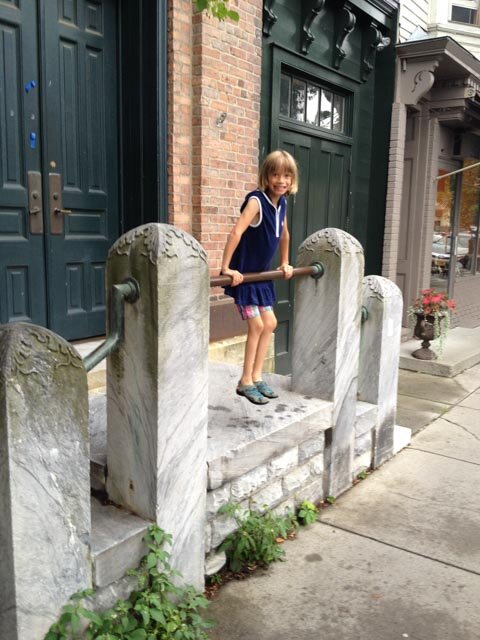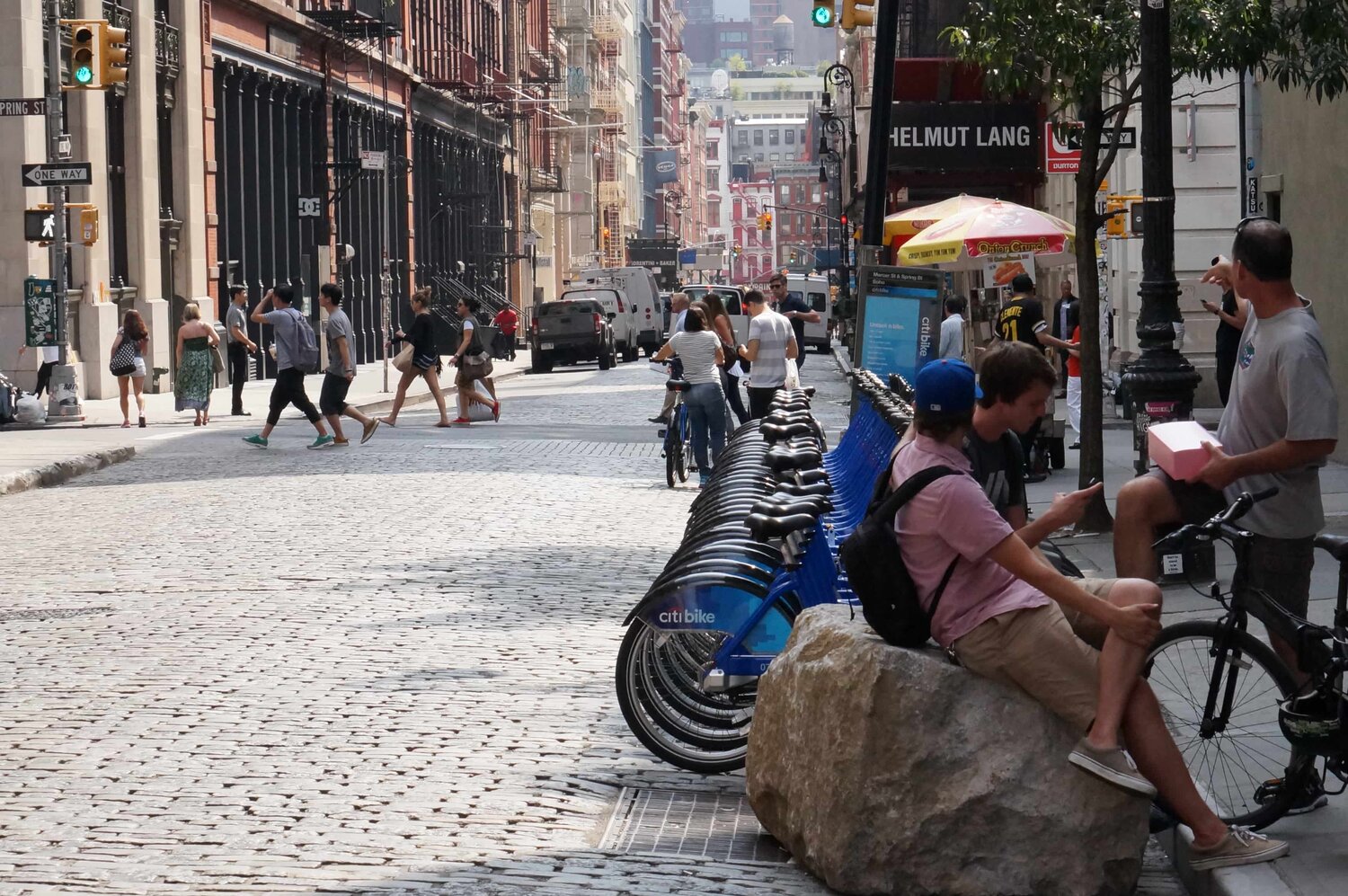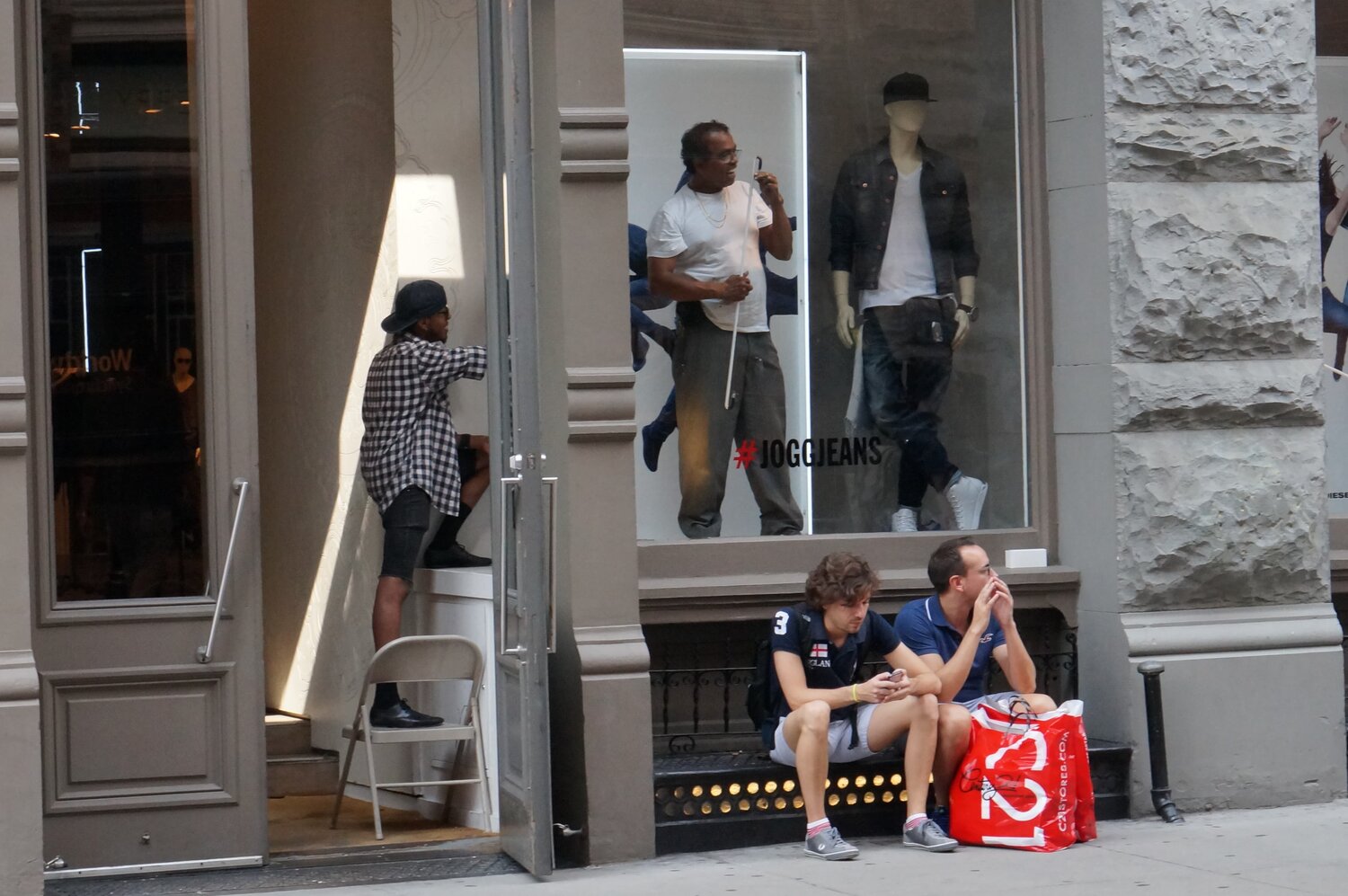A great street has many variables, and occasionally planners and designers are given a chance to have an effect on those variables – when we do, we need to use every available tool to get it right. It is a rare opportunity to tie together the urban environment in a way that can make it irresistible and successful.
Ultimately, success is measured by the ability to encourage and nourish healthy human social activity, which is basic to all other outcomes. Success depends on creating an appealing environment – one that is appealing to people of all ages, incomes, and backgrounds, and also friendly to retailing and restaurants, and other uses that will thrive given the right setting. And there are many opportunities for new public spaces – alleys, pocket parks, squares, and street corners can become engines to fill a street with new energy.

How can planners and designers achieve those high-performing street environments?
Creating a great street environment is no small feat, and is rarely achieved – we have gotten much better at describing what walkable, vibrant streets should be like, but we still can’t reliably create them.
Planners, engineers, and designers are unaware of almost 50 years of research into human urban environments that can be applied to creating vibrant and healthy places. The selection and placement of street furniture, trees and landscaping, and other features, as well as the design and programming of ground floors, is a combination of science and art that can learn from other fields such as user experience (UX) design and environmental psychology.
To me, and to many environmental psychologists, a habitat in which humans can flourish, both personally and as a society, is a habitat that affords our natural behaviors. From behavior research (and common sense) we know that people are attracted to and relate to the functions of their environment – a flight of steps affords climbing, as well as sitting; a wide sidewalk may afford outdoor dining. Identifying a set of affordances and grouping them strategically is a way to use human nature to draw people to use a place or an entire streetscape. So a bench, a potted plant, and a shop entrance, together with savvy outdoor merchandising and façade detailing create a world in miniature that pedestrians and shoppers want to explore.

This idea of affordances is a theory that has had applications in other disciplines, including interface design. The reason that Apple products usurped the consumer electronics market some years ago was because Apple honed their products to be not only useful, but user-friendly, intuitive, and likable. Picking up a tablet and knowing instantly what to do, and how it will respond to the human touch, reflects the developers’ skill in using the theory of affordances.
Applying the Theory of Affordances to Streetscape Design
The choice of affordances can affect who uses the streetscape and who enters a storefront – so if families and young children are an important audience on a shopping street, then we can seek the right retailers for that market and then select and create affordances that invite a youngster to explore, run, jump, and climb throughout their parents’ shopping experience. We can design storefronts and restaurant entrances with inviting details and graspable objects at a height where children could explore them. Management guidelines could encourage shopkeepers to set out merchandise and even toys and miniature sandboxes, with seating for parents. That’s just one example.

Essentially, affordances are a mixture of public and private hooks that are grouped at key locations and properties to help furnish outdoor rooms that enhance the building and the block in terms of brand, attraction, and performance (including more foot traffic and retail sales).
I have used this methodology in some of the highest-performing public space environments in the country. Many design teams are quite open to using the concept with me.
If anyone fears that this sounds over-prescriptive, keep in mind that interaction with community members is the best way to find the right palette of ideas — I use the term performance to also mean how to help communities define their highest priority outcomes, whether it is creating a child-friendly downtown, encouraging more diversity, inducing more walking, or simply providing a better quality of life overall.
Great streets and downtowns are defined by their people and how they interact in their environment.
The quality of our places, and our access to them, have a huge impact on us as individuals and as a community. More and more studies show how true this is: People who feel more attached to their neighborhoods are likelier to invest their time and money into the neighborhood. People move to places that feel friendly and welcoming, with attractive and vibrant places. When you create places where people want to be, you are making a strong community, helping local businesses, and creating an activity center that anchors an inclusive economy.

This article is adapted from a 2015 article Phil published with UrbDezine.


